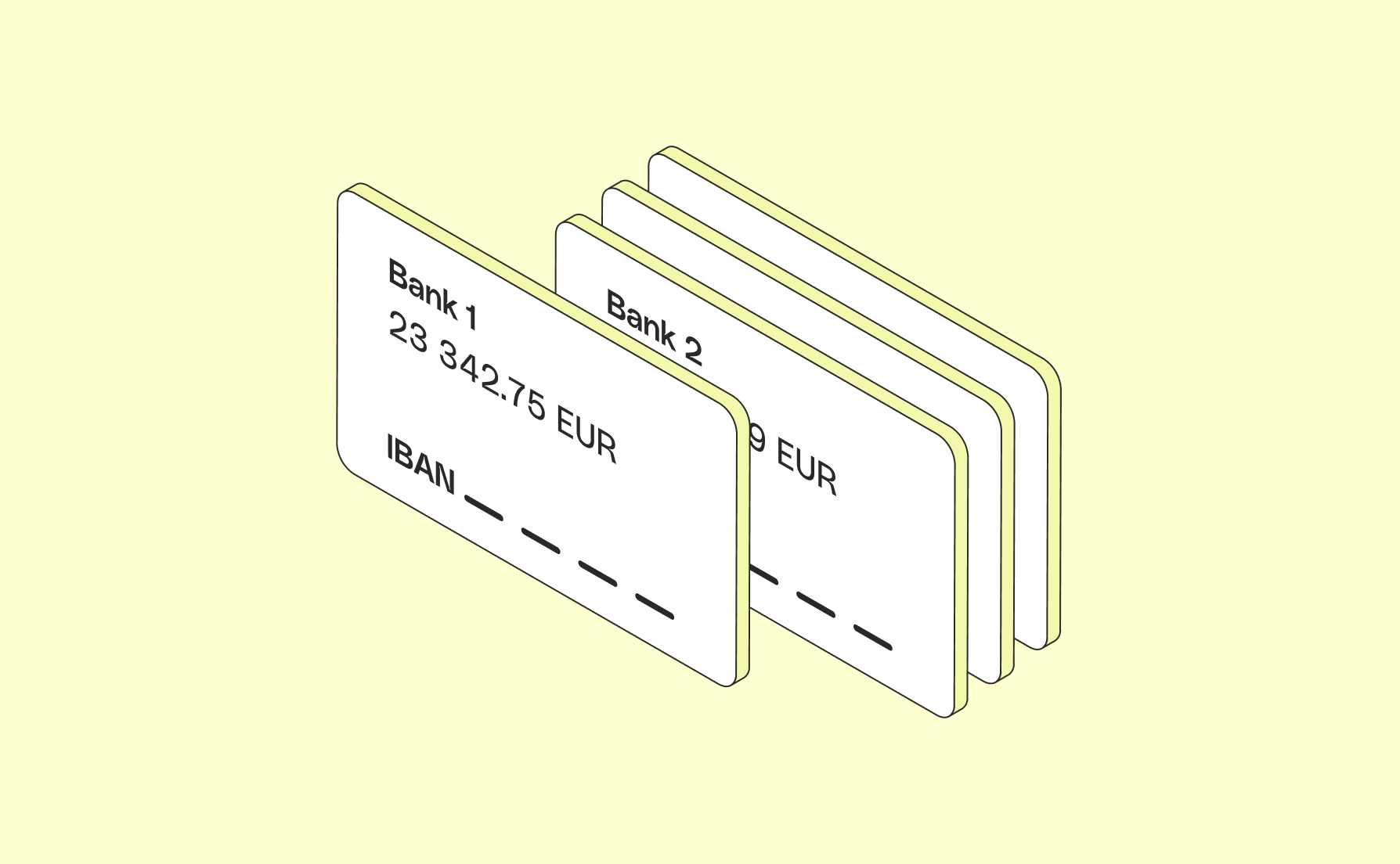September means it’s back to work. A new start, fresh ideas and ambitious plans. A top resolution for many entrepreneurs is to spend smarter. In this article, we explain how you can do just that by identifying potential cost savings and allocating your financial ressources in the wisest way possible.
Spend it wisely: optimize every Euro with solid spend management

Whether you’re a CEO or CFO with a team of employees to manage, a go-it-alone freelancer or a business newbie with a great startup idea, the objective is the same: to squeeze every last drop out of each Euro that leaves the company coffers.
Here’s how efficient spend management can make your business and your bottom line grow.
When spend management helps time management
Some business owners and finance managers find their evenings and weekends get ambushed by accounting paperwork. These moments - which ought to be dedicated to some welcome R&R - are instead spent combing through invoices and receipts to make sure that spending rules have been met and budgets have been respected. If that sounds familiar, it may be time to refine your approach to spend management, take full control over company spending and reclaim that precious free time.
Efficient spend management starts with the ability to see your spending data clearly and quickly. Then, an analysis of that data can lay bare your process for managing issues like procurement, supplier payments and business expenses; the insights gained can help to define the policies, processes and tools you’ll need to reduce unnecessary costs and ensure you get maximum bang for every buck you spend.
It’s a complex dance that requires strategy, foresight and agility.
Make spend management a pillar of your growth strategy
Managing spend efficiently will inevitably reduce excess costs and create room for a variety medium- and long-term improvements to the financial health of an SME’s core business.
- Sustainable growth - by optimizing spend, businesses of all sizes can free up money for strategic investments that will allow them to grow in a sustainable manner.
- Boosting profitability - cutting unnecessary costs makes a company more profitable even if sales and revenue reach a plateau.
- Better decision-making - being able to monitor spending data in real time helps business owners make better-informed decisions, quickly if needed.
- Financial agility - when the market shifts, businesses need to adapt; a clear view of your spend allows you to better adjust how you handle purchase requests, supplier orders and other procurement needs.
- Saving time - time is an important resource; by automating what can safely be automated and cutting out repetitive manual tasks, you can invest that time in more productive pursuits (and reduce the risk of human error).
How SMEs can fine-tune their spend management
Expenses and procurement duties are often spread amongst several employees of a small business. Clear process will help reduce disparities in the way these employees spend, disparities that are the enemy of efficient spend management. Steps to doing this include:
1. Thorough analysis - Put everyone’s spending under the microscope. You might see patterns, trends, avoidable spend and specific areas where you can make easy, painless savings.
2. Define a strategy - Once you’ve understood where your money goes and who spends it, draft a clear policy for all to follow and communicate it to your team.
3. Informed negotiation - It’s worth testing the flexibility of your suppliers. Look out for areas that are ripe for renegotiation and potential win-wins that can bring your costs down in the long term.
Embrace the benefits of delegating
If you’re running a company or finance team, you’ve got a lot on your plate. Delegating to your team not only frees up bandwidth for you, it also gets your team members feeling involved and motivated. And delegation certainly applies to spend management.
As your activity grows, the need to coordinate teams becomes crucial and that’s especially true for anything related to spend management. With the right tools and the right conditions in which to use them, everyone can move forward at the same pace and in the same direction for the good of the company.
- Alexandre Prot, Qonto CEO and Co-founder
Expenses are often cited as a source of friction at all levels of a company, from directors to employees, managers to finance teams. Each person has a role to play in optimizing business spend as well as good reason for doing so.
There’s much at stake for teams in terms of time and energy. A company director doesn’t want his employees spending two hours filling in an Excel spreadsheet to claim back their expenses when they could otherwise be, for example, selling. In the same way, employees don’t want to spend two hours submitting their expense claims.
- Pauline Lannoy, Qonto Product Marketing Manager.
Draw up an expense policy with your team
Providing your employees with a clear expense policy is a good start: it will allow them to know exactly which business expenses they can and cannot claim back. Involving them in the creation of such a policy is an even better start, as it will take into account their considerations and give them a sense of ownership of the company’s approach to expenses.
Together, you and your team can draw up rules on issues such as:
- which type of expenses can be claimed back,
- the payment limits for each type of expense,
- time limits for handing in receipts and proof of payment,
- which supporting documents and receipts are required to validate an expense claim.
💡 Tips for optimizing your company expense policy
#1. Make the policy clear and accessible for everyone.
#2. Use the appropriate payment methods.
#3. Set budgets for every project.
#4. Automate the collection of receipts.
#5. Delegate responsibilities to your managers.
Keeping control of spend when you’re a freelancer
A freelancer is both the CEO and CFO of the company. Here are some ideas for reducing your costs and optimizing your spending if you’re a solo entrepreneur.
Track every expense
Keeping a record of all your outgoings makes it easier to complete your end-of-month accounting, calculate your break-even point and set your hourly rate. You should track each spending item regardless of whether you paid in cash, by card or by check. That includes everything you purchase that goes towards running your business, from internet costs to IT equipment, metro tickets to co-working fees, even down to the snack you buy from the bakery when going to see a customer.
Use free tools
We’ve put together a complete guide to the best management tools for freelancers here, covering needs such as organizing schedules, creating online content and managing social media profiles. For those just starting out on their freelancing journey, it’s usually a good idea to try the free versions of digital tools first and then pay for upgraded versions once you’re sure they’re the right tools for you.
💡 With Qonto, you can generate your quotes and invoices directly within the app. By integrating these documents into your business account you’ll be able to streamline your payment process and track your revenues all from the same place.
Work from home and keep travel to a minimum
A comfortable workspace at home is a great help for keeping costs down. However, not everyone has the space (or the inclination) to work from home, alone, all day, every day. Shop around for the best value co-working spaces and WiFi-equipped coffee shops in your area and, if possible, use a means of transport that allows you to work while you travel.
Deduct your business expenses
Deducting all your business expenses from your tax declaration can result in precious savings. Which expenses qualify will depend on your company legal status, and we’ve put together a comprehensive guide to tax-deductible expenses here.
Let Qonto help you optimize your finance management
If you’re seeking to manage spend and supplier invoices, analyze cash flows through financial reporting and connect all your data to your accounting tool, it helps to do all that from one single place. Qonto is an all-in-one solution that gives you real-time visibility over your finances at all times.
We provide small & medium business owners and freelancers with a platform that allows them to centralize all their cashflow movements and get a real-time vision of their inflows and outflows. Not having to juggle between several platforms is the basis of optimized finance management.
- Pauline Lannoy, Qonto Product Marketing Manager
Qonto has a whole raft of features designed to make life easier for entrepreneurs and help them manage their spend in the most efficient way possible.
With Qonto, you’ll be able to:
- Categorize your spending items (online marketing, inventory, running costs, travel costs etc.) so you can more easily identify areas of excess spending.
- Get alerts on your phone when budgets run over, to serve as starting points for renogotiating contracts with your suppliers.
- Give your accountant the account access they need to be able to tell you where you can make savings, avoid risks and seize opportunities.
- Manage company expenses in the smoothest way possible with our Business and Enterprise subscriptions.
- Use multiple accounts with separate IBANS so you can ring-fence budgets for tax payments, salaries, savings etc.
- Customize your Qonto payment cards to give team members the autonomy to make purchases within the limits and conditions you set in advance.
- Retain full control over your finances, as all individual requests for purchases and payment cards are centralized in one platform and managed in just a few clicks.
With the above tips and tools, you can make spend management more than just a box to be ticked; you can exploit it to unlock precious opportunities to innovate and grow your business. Get in touch with Qonto to discover more about how we can help put efficient spending control at the heart of your strategy.





